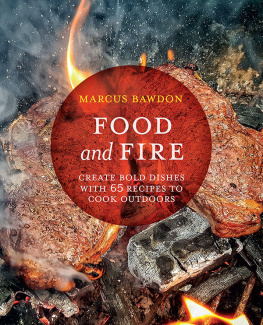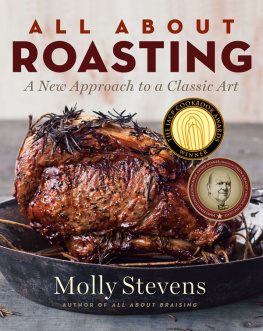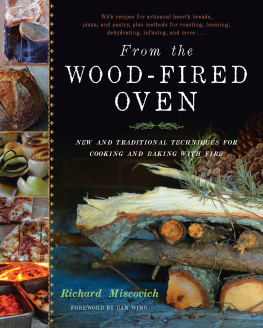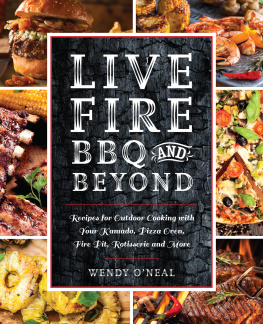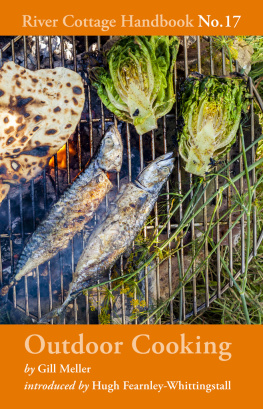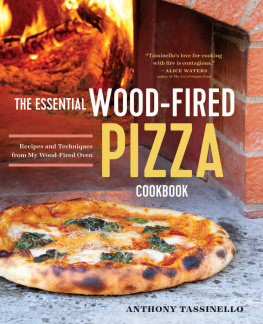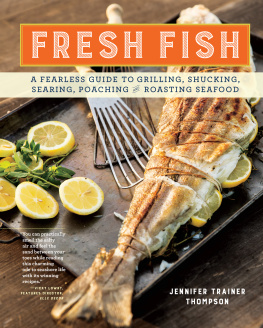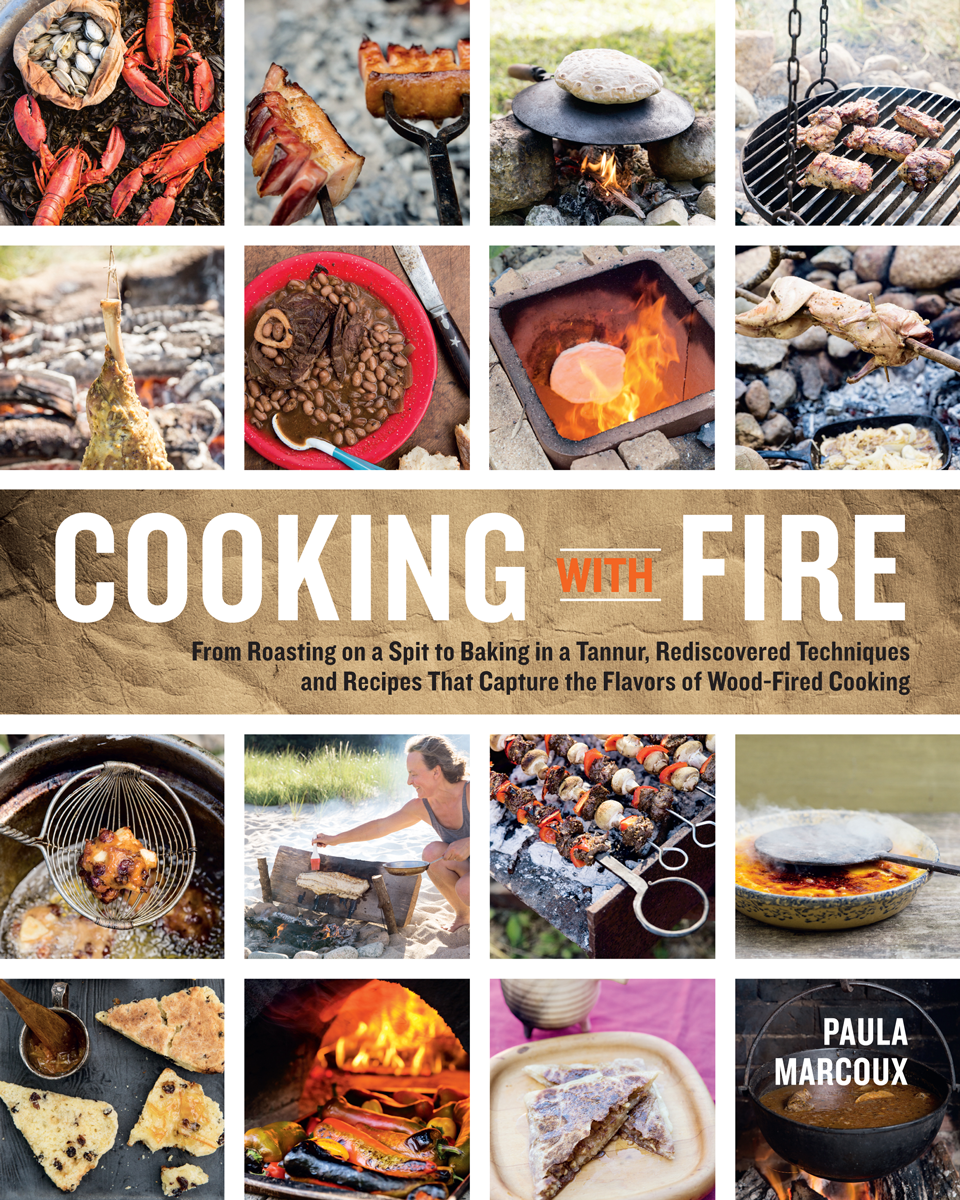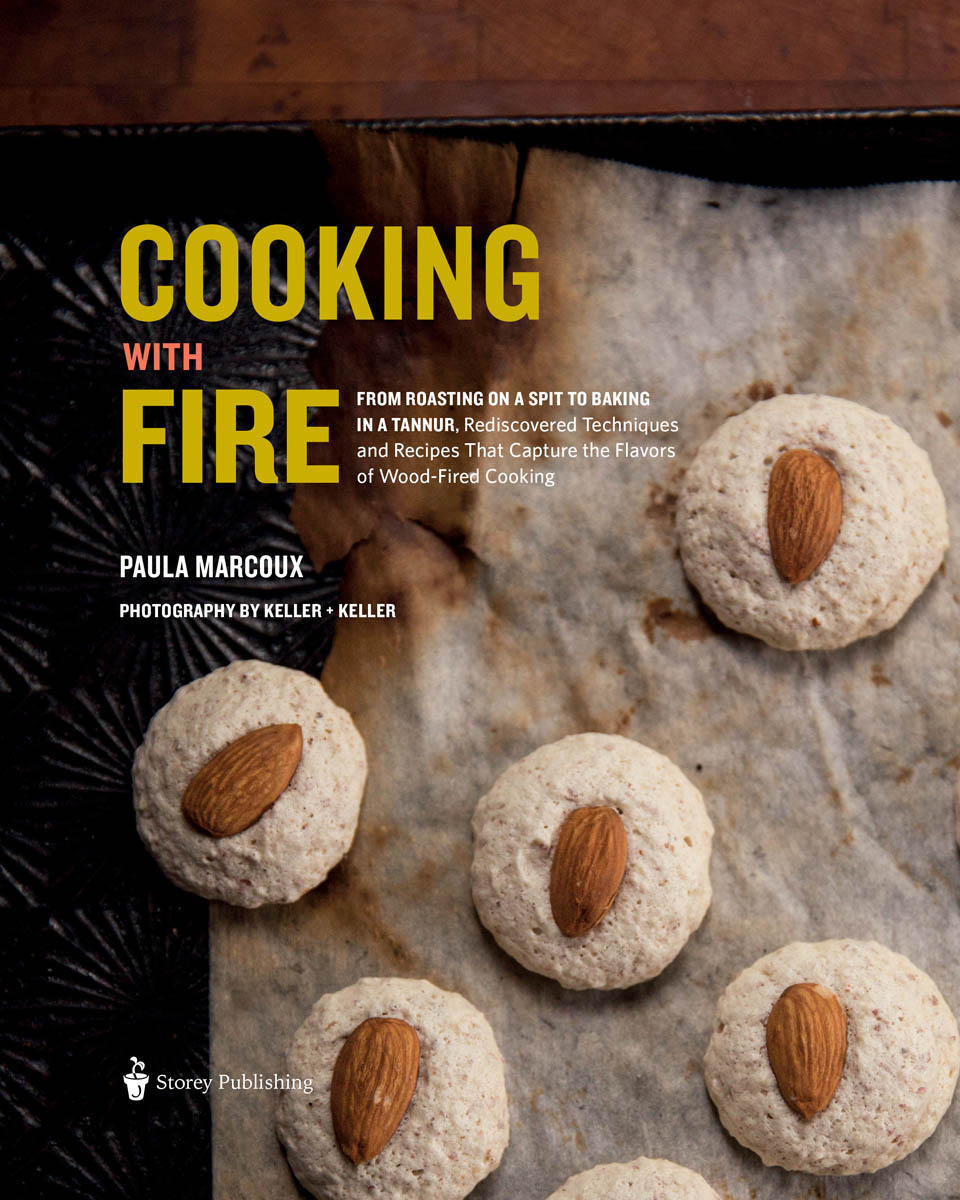Contents
The Recipes
Chapter 1
A Fire and a Stick
It all starts with the fire.
Humans have been at this cooking business for a very long time as long as 1.9 million years, according to a recent and brilliant reinterpretation of hominid development that positions cooked food at the crux of a major evolutionary watershed. Thanks to our capability of controlling fire and applying it to food, we developed a smaller digestive tract, and smaller mouths and teeth. More importantly, we saved hours a day in chewing time, freeing us up to do things like invent bread, pottery, beer, kebabs, bellows, tamales, accounting, and cheese.
One million, nine hundred thousand years. Thats hundreds of millennia weve been cooking, while adapting our understanding of fire and its interactions with food to all kinds of changing conditions. We humans have cooked our way into and through ice ages, deforestation and desertification, falling seas and rising seas, global migrations, mass extinctions of megafauna, the domestication of plants and animals, wars, displacements, and enslavement. And thats all before written history began.
Archaeology hints at some of the rich culinary traditions and ingenious foodways practices of bygone cultures over the millennia. Among some living cultures, a strong oral tradition still preserves food techniques and knowledge a century or more old. But our earliest written recipes are only a few thousand years old, which means that most of the vast spectrum of past human cooking traditions is unknowable to us.
Back to Basics
In the first section of this book, well consider using fire for cooking at its most elemental level, without the intermediaries of pots and pans, spits and grills, griddles and ovens. Just live fire and a stick.
Why cook without pottery and metal? First, its a great way to reintroduce yourself to fire. Spending some quality time with fire, while observing and manipulating it and its relationship with food without any technological barriers, is a great way to understand this primordial element. Regardless of what you cook, you pay attention differently when its just the fire and the food.
Plus, its fun; theres a reason we liked to cook things on sticks when we were kids. Oddly, in our culture, its unusual for grownups to continue the practice. But, with the right group, its a very social experience. Everyone around the fire is involved in producing their own meal, often at a leisurely pace.
And last, it develops respect for the millions of cooks who have gone before: parching grains on hearths, cooking roots or eggs in hot ashes, roasting bits of meat on sticks. All of these techniques require skill and attention to perfect; once you can cook without tools, the rest is cake.
Ultimately, nothing beats taking on a fun cooking project with a bunch of friends or launching some crazy food production as an entertainment at a social event. But to nurture the relationship that makes all this possible, I recommend spending some quality time alone with fire first. Observe how it behaves in different settings with different fuels, and how it reacts to small changes you make to its arrangement, and then, how it works to cook your food. If youve done a lot of grilling, or are already really good at building fires, you may feel like this exercise doesnt apply to you. But I feel that theres always something new to understand and theres never anything to be lost from the quiet, active contemplation of fire.
Making a Fire Before You Start
This first series of exercises may be undertaken indoors at a fireplace, or better yet, outdoors on the ground.
Assemble everything you need at arms reach before you strike a match. For the fire I have in mind, that would be kindling (an armload of dry sticks and twigs of varying sizes), in an amount you can gather in a basket or box or bucket in five minutes time while wandering around the yard. If that doesnt describe where you live, you may want to get in the habit of traveling with such a receptacle so that you can snag kindling as you cross its path. For the purpose of todays exercise, pick up both hardwood and softwood materials; both have their place in firemaking and cooking. Later on in the exercise, youll need three or four pieces of split hardwood. You will find a sturdy, sharp knife handy. And, of course, you will need an igniter: matches, lighter, ember from another fire, magnifying lens, bow drill, or flint and steel.
Making a Fire: Materials
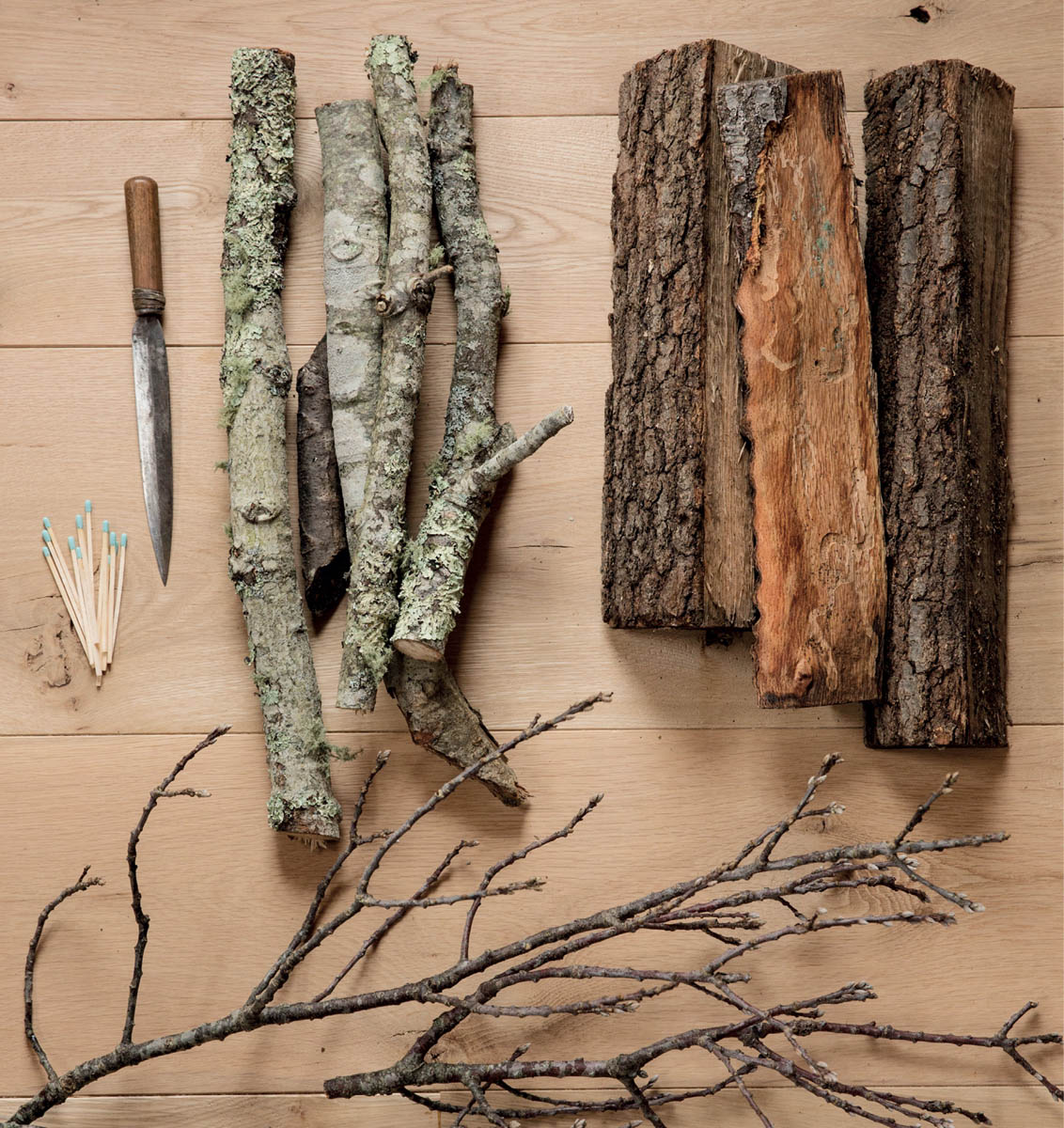
Hardwoods like these burn down to great coals for cooking, regardless of size. Material for kindling a fire may be produced from larger wood by carving or splitting off shavings or splints with a sharp, sturdy knife.
Hardwoods versus Softwoods
Softwoods, like pine, are generally more volatile than hardwoods, which is why they are usually preferable for fire starting. Hardwoods, like oak, maple, and hickory, are a denser source of carbon, the primary component of the coals that will be left on your hearth when the flames have died down. (Smokeless, very hot-burning natural charcoal is the almost-pure carbon material that remains when the volatiles are burned out of hardwood in an oxygen-poor environment.)
Thus, hardwood is preferred for most hearth cooking. It is the deep and even heat emanating from a pile of coals that roasts and grills, maintains a steady simmer in a pot, and blasts one thousand degrees of searing heat at your pizza. Even frying, which favors the quick heat from thinly split pine, benefits from the steadying effect of a bed of hardwood coals underlying the whole operation.
However, pine has its place and one unassailable advantage in that, due to its undesirability as fuel for woodstoves and other heating, it is often given away freely. I am quick to snag it and salt it away for kindling, for boiling and frying in cast iron, for recreational burning, and most of all for heating wood-fired bread ovens, a task at which it excels.
Kindling Your Fire
If youre at an indoor fireplace, open the damper in the flue, and shove any andirons or any other unnecessary appurtenances out of the way. Indoors or out, have a quick look to make sure that flammable things are not contiguous to your fire zone. Dried-flower arrangements, the Christmas tree, a pile of leaves, your double-knit leisure suit... all these should be moved away from the fire area. I have seen each one of these items burn, and you dont want to be surprised by that kind of sudden ignition.
There is no need to be dogmatic about a fire-making approach, except that you should expect to adapt your strategy to the materials at hand. This is a way that works for me, given the type of materials described above.
Bearing in mind that fire is composed of just as much oxygen as fuel, lay one softwood stick in the middle of the hearth and set another so that one end sits across the end of the first one. Where they cross, lean a number of very small sticks or twigs.
Take a sturdy knife and pare off some fine strips of softwood; or, shred up the inner bark from a cedar tree, or pull apart a chunk of white birch bark, or drop in a handful of dry pine needles. Top this puffy pile with a few more medium sticks to anchor it and give the fire something to catch on to.


